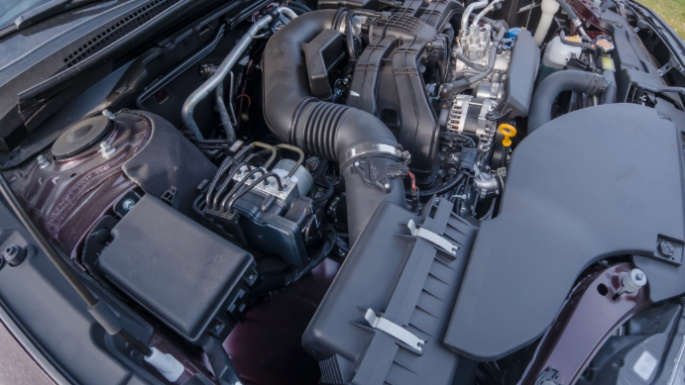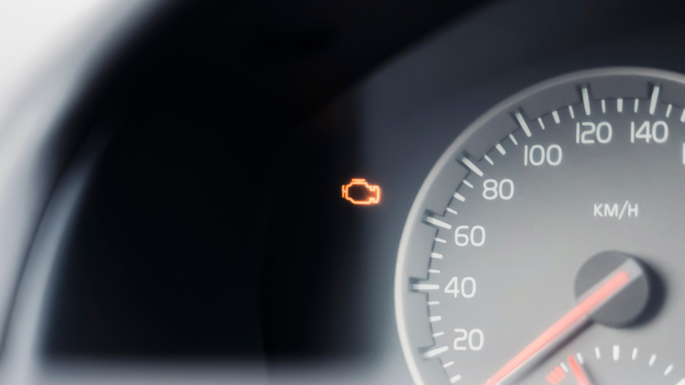What Is an Engine Misfire?
If you suspect that your car’s engine is misfiring, know that the most direct indication is the check engine light.
Also be to sure to watch out for a sharp drop in fuel economy, black smoke from the exhaust, rough idling, hesitancy when accelerating, a knocking sound from the engine, or even a sudden loss of power while driving.
An engine misfires when the air-fuel mixture within at least one of the cylinders fails to combust as it should. Engine components and the processes are designed to be balanced, and anything that disrupts the airflow, fuel delivery, or spark can result in a misfire.
The most common causes of engine misfires include worn or faulty spark plugs, damaged or corroded spark plug wires, vacuum leaks, fowled fuel injectors, a faulty oxygen sensor, or a bad airflow sensor. Each of these works together to feed an engine the ingredients it needs to run properly, and an issue with any one of them can have a profound impact.
Less common causes of misfires include blown cylinder head gaskets, worn piston rings, bent valves, and scored cylinder walls. These are usually indicative of other, more serious engine issues, but they can also contribute to misfire.
Misfires are not to be taken lightly. The engine control units in modern vehicles usually make small system adjustments to the air-fuel mixture by decreasing airflow, increasing fuel delivery, and other actions to compensate for small imbalances. Larger imbalances are not so easily overcome.
Long-term effects from a misfire can include seal and gasket failure and failed engine mounts, among many others. Additionally, unburned fuel passing through a cylinder that is not firing correctly can negatively affect the emissions system by clogging up the catalytic converter, fouling the oxygen sensor, and exiting the exhaust system as black smoke.
A misfiring cylinder can be caused by the likes of limited airflow, a blown head gasket, a fowled fuel injector, a faulty ignition system, or a failure in a vehicle’s control module. Signs of a misfiring engine could include a noticeable decrease in fuel economy, excessive engine vibration, a rough idle, a check engine light, and sluggish acceleration.
Read on to learn more about engine misfires, their common causes, and how to repair them.
How to Diagnose Engine Misfires

If you suspect that your car’s engine is misfiring, common signs to look out for include a significant decrease in fuel economy, black smoke from the exhaust, a rough or lumpy idle, hesitancy when accelerating, a banging or knocking sound from the engine, and a sudden loss of power. The most direct indication of a misfire is the check engine light.
A vehicle’s engine control module can often sense an imbalance within the engine and will store a trouble code that can be read using a vehicle scan tool. An OBD II scan tool can be used on 1996 model-year vehicles and newer. Some older vehicles have onboard diagnostics, but they are less consistent, and may not be as precise. Some may not have any form of onboard diagnostics.
A scan tool that displays specific trouble codes is the best way to pinpoint a misfire. Common engine codes such as P0300, P0301, and P0302 help point to engine misfires but are not specific as to the cause. Other codes are more detailed, and can point to issues such as a faulty mass air flow sensor, a bad oxygen sensor, a lean or rich air-fuel mixture, or a fuel injector issue.
If your scan tool is not specific to the cause of a misfire, then there are other ways to diagnose it. A multimeter can be used to test the electrical current between a spark plug and an ignition coil, and you can manually find and inspect an air or fuel filter for anything that might be preventing air or fuel from flowing correctly to the engine.
A more hands-on approach is to start removing parts. Spark plugs are usually fairly simple to remove, and if one is covered in oil or carbon, it will point directly to your issue. Many repair shops even use stethoscopes to listen to parts of the engine and at least diagnose the origin of a problem. Misfires will sound like a banging or popping.
Preventing and Fixing Engine Misfires

The best way to prevent your engine engine from misfiring is to maintain your vehicle according to the owner’s manual. Even vehicles with a reputation for being unreliable can last with proper maintenance.
Both spark plugs and coil packs need to be replaced as part of a regular maintenance program – as do air filters. All of these can generally be replaced quickly with just a few common tools. An auto repair shop can also do the job, but you'll save money by doing it yourself.
Inspect the parts of the fuel system that you can access. The fuel filter and connections are typically easy to find if not completely visible without having to remove any parts. Use high-quality fuel and oil to ensure that everything running through your engine is as clean and as healthy as possible.
When to Seek Professional Help
If you've maintained your vehicle, you've inspected all of the common problem areas, and you still can't find or fix the misfire, you will likely have to consult a repair shop. Professionals have more advanced tools to diagnose car issues and to access deeper parts of the engine.
Signs of trouble such as white smoke from the tailpipe, coolant leaks, oil leaks, and your vehicle not being able to start at all or just shutting off will likely not be a simple issue such as one faulty spark plug. They can point to larger issues, such as blown head gaskets, a faulty crankshaft position sensor, a clogged catalytic converter, or an engine control unit malfunction.
Thankfully, most engine misfires can be prevented, easily remedied, and diagnosed quickly. It's usually when vehicle owners ignore an engine misfire that things can break and become expensive.


